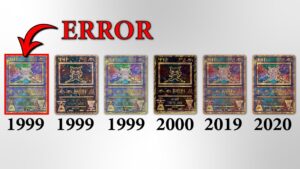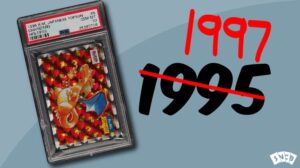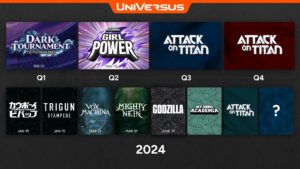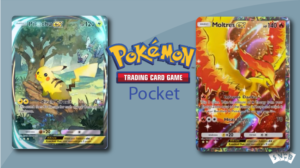4 Ways To Organize Yu-Gi-Oh! Cards In A Binder
-
By: Oliver Copeland
- Published:
- Last Updated: February 6, 2024
Collecting Yu-Gi-Oh! cards in an incredibly fun hobby to have. Whether you’re actively playing the game or just collecting cards that you like, you may end up with a collection of hundreds or even thousands of cards.
The question becomes how do you store those cards? One of the best methods of storing Yu-Gi-Oh! cards is in a binder.
This will not only make it easier to find the cards you need, but it also prevents your cards from getting damaged. This protection means that your cards will retain value and remain in playable condition. If you plan to sell or trade cards, making sure that they stay in good condition is one of the most important things you can do, after simply keeping them clean.
There are several ways you can organize your collection depending on what you want to do with your cards, and today we’ll be going through four ways of organizing your binders to maximize your efficiency.
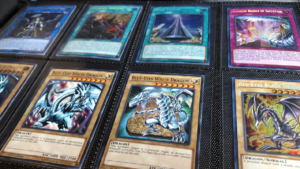
1. Organize by Deck/Archetype
If you play the game, you might have several different decks you have built over the years. If you organize your binder to have that entire deck laid out for you, it’s easy to switch between decks simply by removing the cards from your binder. This means you don’t have to search multiple binders to build a new deck.
This strategy also helps if you try to sell decks. By having the entire deck available for easy viewing, it’s easy to show an interested buyer precisely what you have on offer.
If you have multiple cards belonging to the same archetype (like Blue-Eyes cards etc.), storing them together can be really helpful even if you don’t use all of them. You never know when one of these obscure cards that have never seen play in its archetype will become useful because of a niche interaction or a new card that is released to support that archetype.
Cards like Dark Magician and Blue-Eyes White Dragon are constantly getting new support. If you organize your cards by archetype, keeping all your Dark Magician cards in the same place will help you make changes to your deck without having to search through all your files to find what you already own.
2. By order of release date
Sometimes, you want to sort your cards by set release to make them easier to find. If you have good product knowledge, it can be easy to sort your cards into different binders depending on which set they came out in. That way, if you or someone you know is looking for a specific card, it’s easy for you to know whether you own it or not. If you do, it’ll be in that specific binder. If it isn’t, you don’t have the card.
For vendors, this can be particularly helpful when new sets are released because those cards will likely be in high demand. By keeping your cards organized in this way, it’s easy to stay on top of how many copies you have without having to look through your whole collection.
Each Yu-Gi-Oh! card shows its set code under the card’s picture on the bottom right.
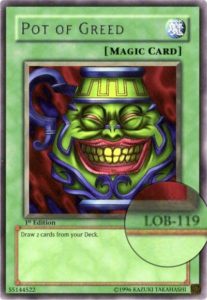
For example, Pot of Greed, which was released first in The Legend of The Blue-Eyes White Dragon, has a specific code that identifies which set it’s been printed in and its place in the set. Pot of Greed has a code of “LOB-119”, which identifies it as the 119th card within LOB (The Legend of The Blue Eyes White Dragon). Different printings of the same card can have wildly different values, so knowing which printing you own is very important.
3. By Rarity
If you like your binders to be uniform, this is the way to go. Like most card games, Yu-Gi-Oh! cards come in several different rarities. By keeping different rarities separate, your binders can be aesthetic and visually appealing.
It can be difficult to find exactly the cards you need if you use this method, but the stunning visual result might be worth the extra time it takes you to find your cards.
Yu-Gi-Oh! cards in core sets come in four standard rarities, but used to come in five. First is the “common” rarity. These cards have no foil on either the card art or the name. The next rarity is called “rare” cards. These cards have a silver foiling on the card name but no foiling on the card art. Interestingly, this rarity no longer appears in core sets.
The next rarity is called “super rare.” These cards have foiling on the card arts, but no foiling on the name. Each core booster pack now contains a card of super rare rarity or higher.
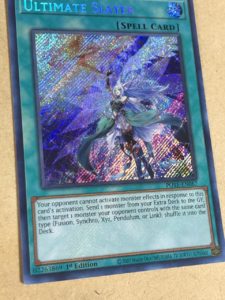
One level up from super rare comes “ultra rare.” These cards have foiling on their pictures and also have golden foiling on their card names. In a standard core booster box of 24 packs, there will be four ultra-rare cards.
The highest rarity found within core booster packs is called “secret rare.” These cards have specific foiling which shines more than ultra rares, having diagonal foiling patterns which look absolutely amazing, as well as a shining foil name. There are only two of these in a standard booster box, and they are usually the most valuable cards in the set.
There are other rarities as well, which are found in other Yu-Gi-Oh! products. However, that’s a discussion for another time.
4. By Function
Yu-Gi-Oh! cards all have unique effects, but most of them can be categorized into a few different groups. Cards that draw you more cards, cards that destroy other cards, hand traps, and interruptions. These are all different categories of cards you can use to organize your binders.
Organizing your cards in this way is very helpful because you can find cards that suit your purposes very easily. At many tournaments, you’ll see players swapping out cards between their decks and their binders based on what they think they’ll need that day. Switching out cards based on their function is much easier when your binders are organized in a way that suits your purpose.
Keeping your hand traps together means you can easily switch out specific cards from your deck without having to search through your entire collection. In the same way, keeping your extra deck monsters organized by type (Fusion, Synchro, XYZ, Link Monsters) also means you can swap cards in and out of your extra deck with ease.
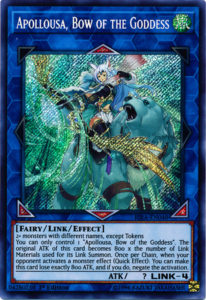
Overall, there are many ways to organize your binders for whatever purpose you need. Whatever way you choose, make sure that you’re able to find your cards easily. The last thing you want is to struggle to find an important card because you didn’t organize your binders properly.
The most important thing is that you organize your cards in a way that’s easy for you to navigate. If you can find your cards whenever you want them, that’s all you need.
I should also mention that you should probably sleeve your cards before inserting them into a binder. In fact, some collectors sleeve all their cards, but this is a personal choice.

Hi, I'm Oliver. I've been collecting Pokémon cards for 25+ years. I hope you enjoyed your read and learned something. Learn more about me on the About page.

